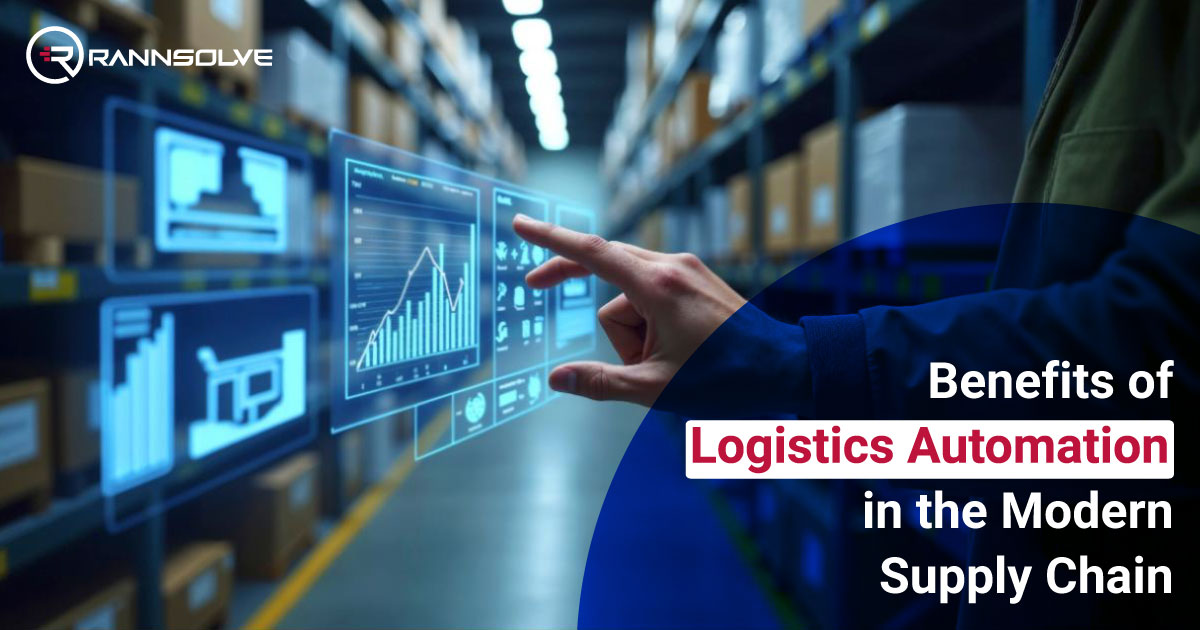The logistics industry isn’t what it used to be. Today, it’s a complex, high-speed operation involving everything from sourcing raw materials to delivering a package to someone’s doorstep. As customer expectations keep growing and competition tightens, the industry is turning to logistics automation, not just to keep up, but to stay ahead.
Simply put, logistics automation is about removing unnecessary manual work and streamlining the entire supply chain using AI. Whether it’s improving warehouse operations, optimizing delivery routes, or automating paperwork, the goal remains the same: do it faster, cheaper, and without errors.
Benefits of Process Automation in Logistics
Logistics automation isn’t just about adding new tools. It’s about rethinking how things get done. Whether you’re shipping food, fashion, or furniture, process automation in logistics helps ensure goods move efficiently from point A to point B.
Take vehicle allocation, for instance. With the mix of AI and machine learning (ML), auto allocation systems are making fast, informed decisions that were once left to manual planners. These systems evaluate delivery parameters like weight, volume, distance, and vehicle type and assign the right vehicle without human input. If there’s a chance to use an e-bike for a short-range, eco-friendly delivery instead of a van, the system will pick it. This kind of decision-making doesn’t just save time; it avoids fuel waste, reduces delivery errors, and opens the door to more sustainable logistics operations.
Let’s look at the benefits of process automation in logistics
Warehouse Automation
Warehouses are at the heart of any logistics business. But when operations are driven by manual processes, they stay behind. Process automation in logistics is changing how warehouses run.
Broadly, warehouse automation can be broken down into three levels: basic, system, and advanced.
- Basic warehouse automation: It is where most companies start. It includes simple, but highly effective technologies like barcode scanning, handheld devices, and conveyor belts. These tools help reduce manual errors, speed up tasks like order picking and inventory tracking, and free up workers from repetitive work.
- Warehouse system automation: At this level, software solutions like Warehouse Management Systems (WMS) come into play. These systems manage inventory, track product movement, and sync with other parts of the supply chain. Instead of guessing where something is or how much stock is left, system automation gives real-time visibility and coordination across warehouse activities.
- Advanced warehouse automation: It involves robotic process automation (RPA), AI, and machine learning. Here, robots can pick, stack, and store items based on how often they’re ordered, their size, or expiration dates. Some advanced systems can even predict demand patterns and automatically reorganize inventory to prepare for them. They help move goods faster and often require less floor space.
Cost Savings with Logistics Automation
Logistics isn’t cheap. Fuel prices, re-delivery attempts, and route inefficiencies can quietly eat the profits away. That’s where process automation can offer a better way for logistics management. AI-powered route optimization tools optimize delivery routes to reduce mileage, traffic delays, and delivery failures. This alone can slash last-mile delivery costs by up to 14%. But the savings go beyond fuel.
Let’s say a customer isn’t home at the time of delivery. Instead of sending the driver back again the next day, dynamic routing systems send real-time tracking info to the customer and adjust routes on the fly. If a driver tries to deviate from a location or make a fake delivery using mock GPS, the system will alert. It tracks route adherence and compares driver location with the actual delivery point, flagging anything suspicious, reducing false deliveries and reattempts. Which in turn protects both reputation and revenue.
Smart Document Automation
Paperwork in logistics is everywhere. Shipping labels, customs forms, invoices, proofs of delivery, the list goes on. Manually handling all that pile of documents slows things down and leaves room for errors. With document automation, much of this can be processed in seconds. Documents are scanned, analyzed, and sorted using automation tools that are faster and more reliable than humans. By automating your logistics process, you’ll be able to get your items shipped out faster than ever before.
Better Business Visibility and Control
With logistics process automation, you get a much clearer picture of your entire operation. You can see where your inventory is, what’s delayed, what’s arriving soon, and what needs urgent attention.
This is especially critical for perishable goods like food. You need to know exactly where your product is at all times to prevent it from spoiling before it reaches the customer. If that happens, it’s a loss for both you and your customer—not to mention the hit to your reputation. Tracking everything in real-time helps ensure that products stay on course and arrive fresh.
More visibility also means smarter inventory management. If you know what’s moving and what’s not, you can avoid overstocking or understocking—and the costs that come with both.
If you haven’t started thinking seriously about intelligent workflow automation in your logistics process, now might be a good time to take a closer look.
Partner with the right logistics process automation service provider to ensure your business is in good hands.
Rannsolve, Your Logistics Automation Partner!
With over 8 years of expertise in AI and intelligent workflow automation, Rannsolve brings you the Cognitive Process Automator (CPA)—a tool that automates logistics processes and makes your logistics workflow easier than ever. Request a demo today!





